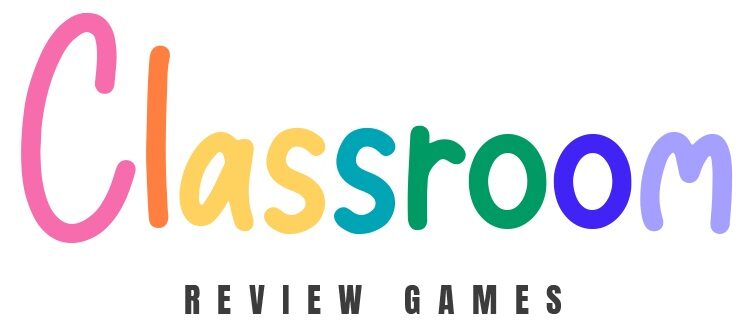14 Science Review Games That Are Super Fun
Get ready to shake up your science class with fun classroom review games! Transform your classroom into a hub of curiosity and engagement. Picture your students diving headfirst into the wonders of science, where complex theories and processes become the playground for their imagination. From hands-on experiments that spark laughter to puzzles that ignite critical thinking, here are all the insider tips and tricks to make learning interactive.
1. Element Bingo
Materials Needed:
- Bingo cards with symbols or names of elements from the periodic table
- Markers or chips
- A list of element properties or trivia for the teacher to call out
How to Play:
This version of Bingo replaces numbers with elements. The teacher calls out properties or trivia about elements (e.g., “Has 2 valence electrons,” “Is a noble gas”), and students mark off the corresponding element on their cards. The first student to get a row, column, or diagonal and shout “Bingo!” wins.
2. Lab Equipment Scavenger Hunt
Materials Needed:
- Cards with names or pictures of lab equipment
- Lab equipment spread around the classroom or a designated area
How to Play:
Students search for lab equipment matching the descriptions or images on their cards. This game familiarizes students with lab equipment and their uses, encouraging them to explore and ask questions about the tools scientists use.
3. Scientific Method Relay
Materials Needed:
- Cards with steps of the scientific method or related tasks
- A space for teams to run or pass a baton
How to Play:
Teams compete in a relay race where each member must complete a task related to a step of the scientific method before passing the baton. Tasks can include forming a hypothesis, designing an experiment, or interpreting hypothetical results. This game reinforces the scientific process in a fun and active way.
4. Biome Puzzle Race
Materials Needed:
- Puzzle pieces with components of different biomes (animals, plants, climate features)
- Timers
How to Play:
Students race against the clock to assemble puzzles representing different biomes, matching flora, fauna, and climate features correctly. This game enhances understanding of ecosystems and the interdependence of organisms within them.
5. Chemical Compound Memory
Materials Needed:
- Cards with chemical symbols on one set and the names of the compounds they form on another set
How to Play:
Spread out all cards face down. Students take turns flipping two cards at a time, trying to match chemical symbols with their corresponding compounds. This game tests memory and reinforces knowledge of chemical nomenclature.
6. Physics Jeopardy

Materials Needed:
- A Jeopardy game template with categories related to physics topics like motion, energy, waves, and electricity
- Questions for each category
How to Play:
Students choose questions from categories, with each question having a point value. Correct answers earn points, and the student or team with the most points at the end of the game wins. This format is excellent for reviewing a wide range of physics concepts.
7. Ecosystem Bingo
Materials Needed:
- Bingo cards with species or elements from various ecosystems
- Markers or chips
- A list of descriptions or facts about the species or ecosystem elements for the teacher to call out
How to Play:
In this game, Bingo cards feature species or elements from different ecosystems. The teacher calls out descriptions or facts, and students mark their cards if they have a matching species or element. This game reinforces knowledge of ecosystems and biodiversity.
8. Anatomy Label Race
Materials Needed:
- Large diagrams of human or animal anatomies without labels
- Sets of labels with anatomical terms
How to Play:
Teams compete to correctly label parts of the anatomy on large diagrams. This can include systems like the skeletal, muscular, or circulatory systems. Accuracy and speed are key, making this an engaging way to learn anatomical terms.
9. Rock and Mineral Matching
Materials Needed:
- Cards with images or descriptions of rocks and minerals on one set and their names or classifications on another set
How to Play:
Students match rocks and minerals with their names or classifications, reinforcing geology concepts and familiarizing them with various specimens.
10. Cell Structure Construction
Materials Needed:
- Playdough, clay, or building blocks
- Diagrams or lists of cell structures and their functions
How to Play:
Students use playdough, clay, or building blocks to construct models of cells, including all the key organelles and structures. This hands-on activity aids in visualizing and understanding cell biology.
11. Solar System Scale Model
Materials Needed:
- Cards with facts about planets and other celestial bodies
- A large open space or hallway
How to Play:
Students create a scale model of the solar system in a large open space, using cards with planet facts to mark the relative positions of celestial bodies. This activity helps students grasp the vast distances in space and the relative sizes of planets.
12. Science Pictionary
Materials Needed:
- Whiteboard and markers or paper and pencils
- Cards with scientific terms, processes, or phenomena
How to Play:
Players draw representations of the scientific terms, processes, or phenomena on the cards, while their teammates try to guess what they are drawing. This game encourages creative thinking and helps solidify understanding of scientific concepts.
13. Conservation Debate
Materials Needed:
- Topics related to environmental science and conservation
- Timer
How to Play:
Students engage in timed debates on conservation topics, such as climate change mitigation strategies or wildlife protection laws. This activity encourages critical thinking and helps students articulate and defend their understanding of environmental science.
14. DNA Sequence Challenge
Materials Needed:
- Cards with sequences of DNA bases (A, T, G, C)
- Cards with traits or characteristics encoded by the DNA sequences
How to Play:
Students match DNA sequences with the traits or characteristics they encode, reinforcing genetics concepts and the relationship between DNA and physical traits.
